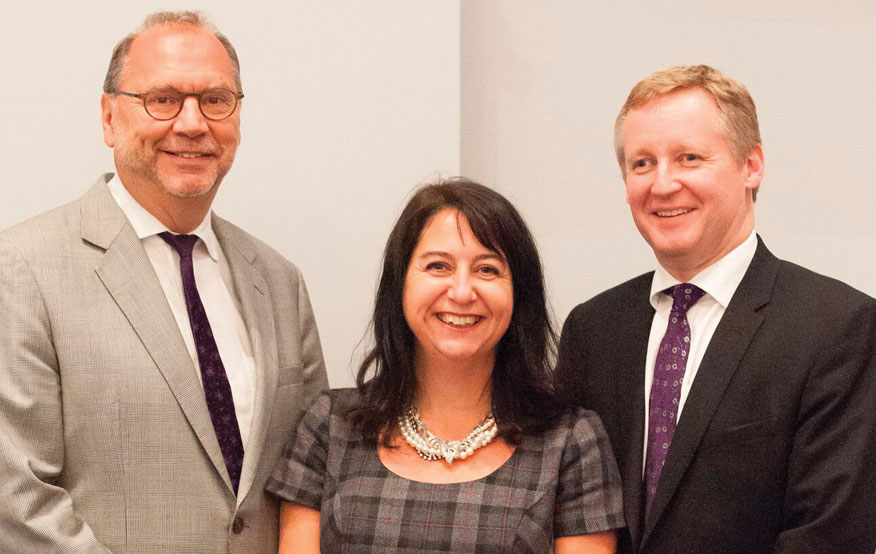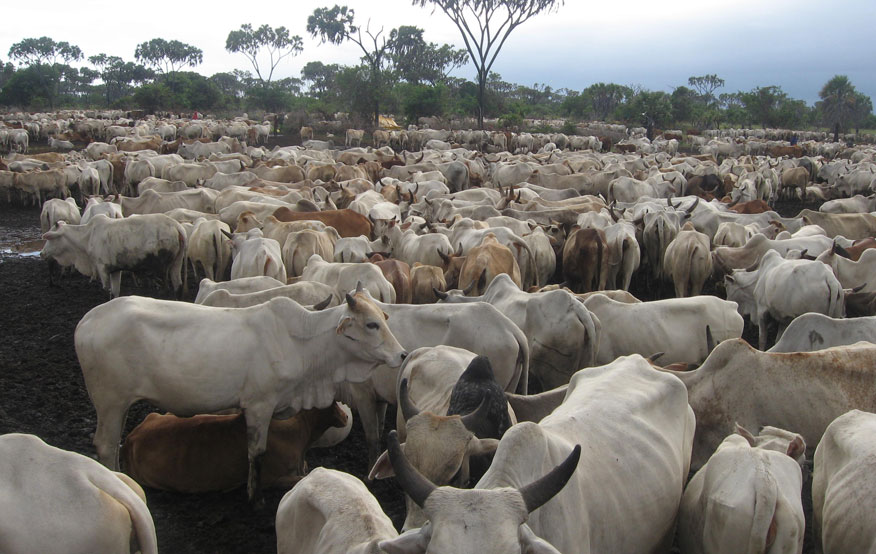Tackling Diseases of tomorrow and Antimicrobial Resistance
Clinical Connections – Autumn 2016
Royal Veterinary College Principal Stuart Reid spoke at a debate held at our Camden campus in October, and urged different professions to work together to implement life-saving measures around the world.
Royal Veterinary College (RVC) Principal Stuart Reid and Peter Piot, Director of the London School of Hygiene & Tropical Medicine, have urged for a more collaborative and integrated response to zoonotic diseases like Zika and Ebola and antimicrobial resistance (AMR).
They were speaking at a debate at the RVC’s Camden campus on October 3, entitled ‘Why One Health & veterinary epidemiology are so important to the future’. It was hosted in collaboration with New Scientist.
During the event Professors Reid and Piot emphasised that specialists from the veterinary, medical, biological, environmental and social sciences must work together, along with policymakers, to implement life-saving measures around the world.
Introducing the event, Clare Wilson. Medical Reporter at New Scientist, referred to key threats that had been prominent in recent months, including the incursion of the mosquito-borne Zika virus into the Americas. It had formerly been known to occur only within a narrow equatorial belt from Africa to Asia.
She said: “We saw how a formerly obscure virus called Zika could go from a pathogen that mainly affects forest animals in Africa to an international public health emergency. Zika generally only causes mild disease in adults but, for reasons that are still unclear to us, it is now causing cases of brain damage in foetuses of pregnant women. Before that, we had the Ebola epidemic in West Africa.”
She added: “Just two weeks ago, the UN Secretary-General Ban Ki-moon said antimicrobial resistance is a fundamental threat to global health. It has been estimated that at least 700,000 people a year die from drug-resistant infections. These are just some examples that show how human health, animal health and the health of our ecosystems are inextricably linked.”

Introducing Professors Reid and Piot as “Leading members of the One Health movement”, she said: “This is an initiative that seeks to defend the health and well-being of all species by bringing together doctors, vets and other researchers.”
Professor Piot, who has a medical background and has also been a microbiologist at a zoo, co-discovered the Ebola virus and has worked on the HIV virus for much of his professional life.
Referring to the breadth of the One Health initiative, he said: “One Health - the concept and the importance of it - goes way beyond infectious diseases, when we think of our food security, when we think of the interaction between agriculture, animals, human primates, the environment and so on.”
However, focusing on infectious diseases like Ebola, influenza, HIV and Zika, he said: “What they have in common is that they are all zoonoses. A zoonoses is a virus that we look at through an anthropomorphic lens, that infects us and comes from an animal. It crosses the species barrier.
“It is safe to say the problem is only going to get worse. It’s hard to predict the future but, because of a number of driving forces - high mobility, international travel and trade, ecological change, demographic pressure, climate change, environmental pollution and agricultural practices – we will see more zoonotic disease affecting us humans. That is why it is so important that we understand perfectly the epidemiology and pathogenesis of viruses and other infectious agents in both human primates and all the other animals.”
Moving on to AMR, he added: “This is a crisis that is looming. There is, on the one hand, a rise in bacteria that is resistant to treatment with available antibiotics and, at the same time, innovation in antibiotic therapy is going down.” Picking up the theme of One Health’s scope, Professor Reid, an RCVS Specialist in Veterinary Epidemiology and Diplomate of the European College of Veterinary Public Health, said: “I would extend the paradigm than Peter talked about, with zoonotic being diseases that humans and animals share, to a perhaps more inclusive definition that the FAO have been working with.
“What they’ve been talking about is not only that we need to maximise this interface between our knowledge of host, pathogen and environment, but also the technical level. We have to have the drugs - we have to have the vaccines - before we can actually make any sort of meaningful intervention.
“We also have to have the social level – we have to change people’s behaviour. We have to ensure that they maintain closed herds, have safe sex, that they do wash their hands. Then there is an institutional level, where we get government buy-in. For true One Health it’s going to cost a lot of money and it’s going to take an enormous amount of logistics to make things happen. For me One Health is when these three things come together. It’s how we bring together the way we make change and we will only make that change if we have solutions at all three levels. Without all three you do not have a One Health solution.”

Using the example of rabies to illustrate the above points, he added: “This is a disease that has a One Health solution that we haven’t implemented yet, and frankly we should hang our heads in shame because we have the technical solutions, we haven’t got the social level solutions sorted and, worst of all, we haven’t got the institutional level.”
Moving on to AMR, Professor Reid said: “Is it that resistance is going from animals to humans or is it indeed the other way around? Actually it doesn’t really matter as it’s an ecosystem problem.”
Emphasising the importance of focusing on the ecosystem, as well as human and animal sources of AMR, Professor Reid added: “We’ve got a huge amount of information about antimicrobial resistance in humans, particularly in a hospital environment, and we have quite a lot about it in the animal populations. What we don’t have is where it lies in the ecosystem, in the water courses and so on. Without that piece of the jigsaw it is, frankly, a waste of time.”
He went on to say: “We talk about the incipient epidemic or catastrophe of AMR but it’s not incipient – it’s here. There are people dying across the planet from untreatable bacterial diseases in a way that they weren’t 15 or 20 years ago. There is a counter-side to it actually, we talk about antimicrobial resistance but quite a lot of the planet has access to no antimicrobials, which is often ignored in this particular set of arguments.”
In a question and answer session at the end of the debate, a member of the audience referred to the point Professor Piot had made about a decline in innovation in antibiotic production.The questioner asked why this should have “stagnated” despite there being a “bigger and bigger market for effective antibiotics”, and what could be done to encourage large pharmaceutical companies to invest more in research and development in the area.
In response, Professor Piot said: “One of the reasons there has been a decline in innovation in antibiotics is that there was no perceived market, because the existing antibiotics were basically doing their job. So you had to make enormous investments of hundreds of millions of pounds to bring out something that might be only slightly better. So no market and no scientific interest. Many companies closed down their divisions that would deal with antibiotics.”
Addressing the issue of human behaviour in relation to the veterinary pharmacology context, Professor Reid added: “Those of us involved in the animal health world have to recognise that, for a period, in some instances, antimicrobials were used to compensate for bad husbandry. As the drugs disappear, good husbandry has to come back in – which is a behavioural level solution rather than the development of a new class of drugs.”
Sign up to get Clinical Connections in your inbox rvc.ac.uk/clinical-connections
